Abstract
Broth dilution minimal inhibitory concentration (MIC) readings were compared after different incubation periods and with different inoculum concentrations. The purpose was to determine the best conditions for obtaining early results as close as possible to overnight readings. Initially, 76 antibiotic-organism combinations were tested using the International Collaborative Study technique and inoculum and were read after 3, 8, and 18 h of incubation. Approximately 28% of tests showed fourfold or greater increases in MICs after 18 h of incubation compared with the 3-h readings. No overnight MICs were lower than early readings. MICs of single antibiotics against seven organisms were also read with an automatic particle counter to confirm the validity of the visual readings. Experiments were made to determine whether inoculum manipulation could reconcile the differences between 3- and 18-h MIC results. One hundred and eight organism-antibiotic combinations were tested comparing 3-h MIC readings using an inoculum of 107 organisms per ml with overnight readings using 105 per ml. In 71 cases, readings with both inocula were within the range tested and 57 (86%) were within ±1 log2 of each other and followed an approximately normal distribution. Improved comparability between early read and overnight MICs thus may be achieved by inoculum manipulation, and this may be a suitable approach in the future development of automated procedures.
Full text
PDF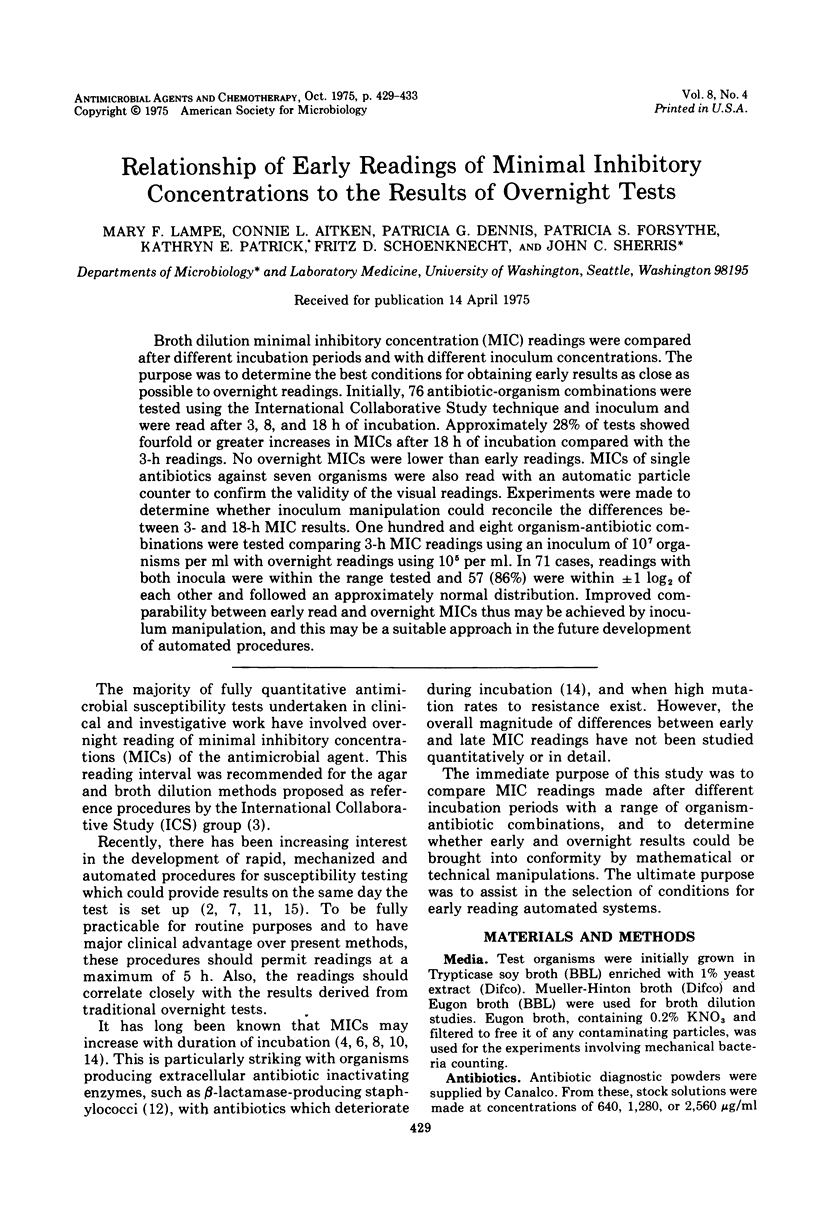
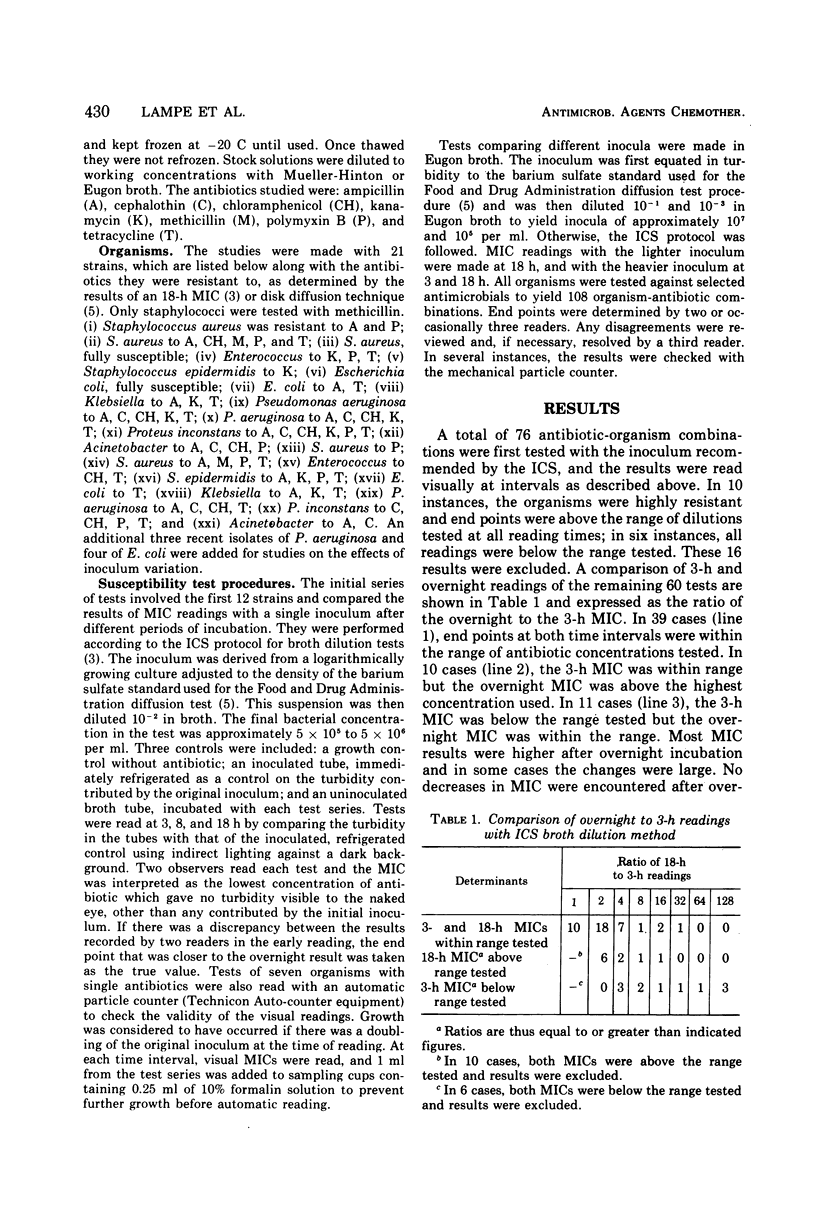
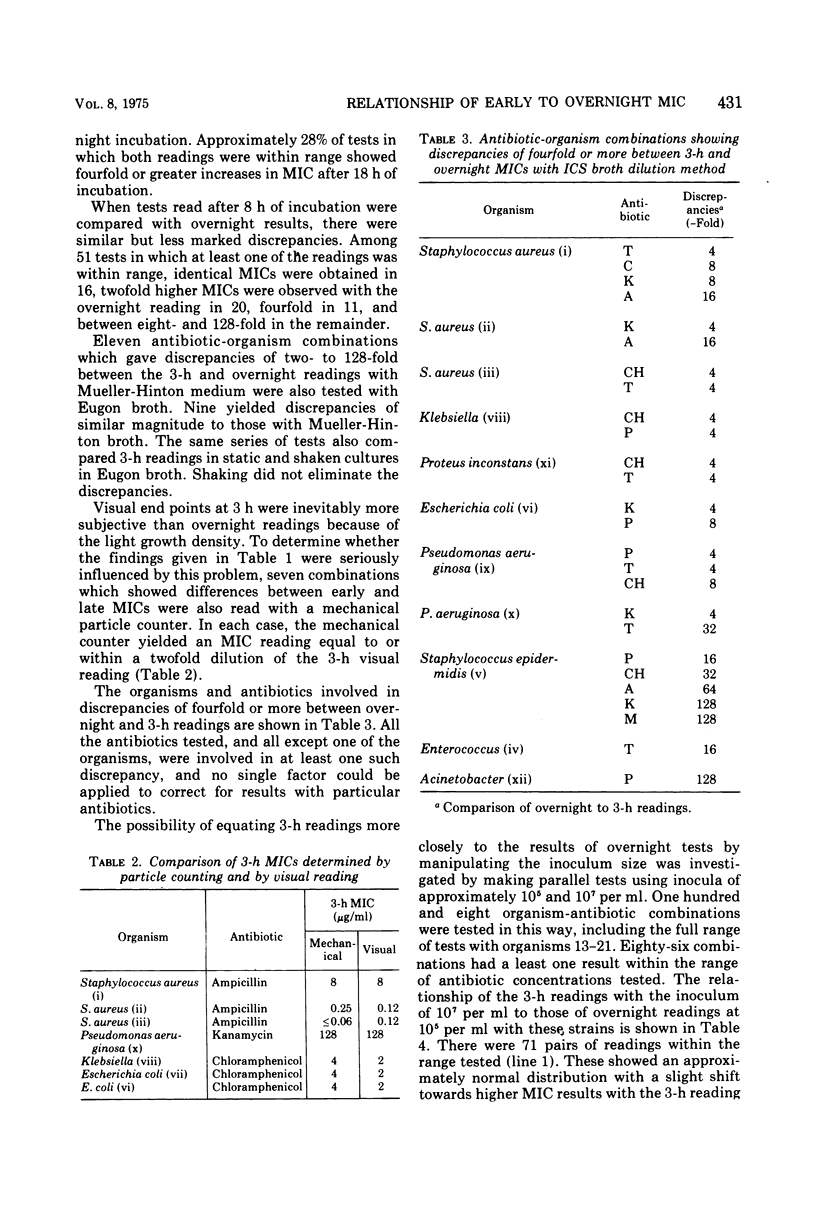
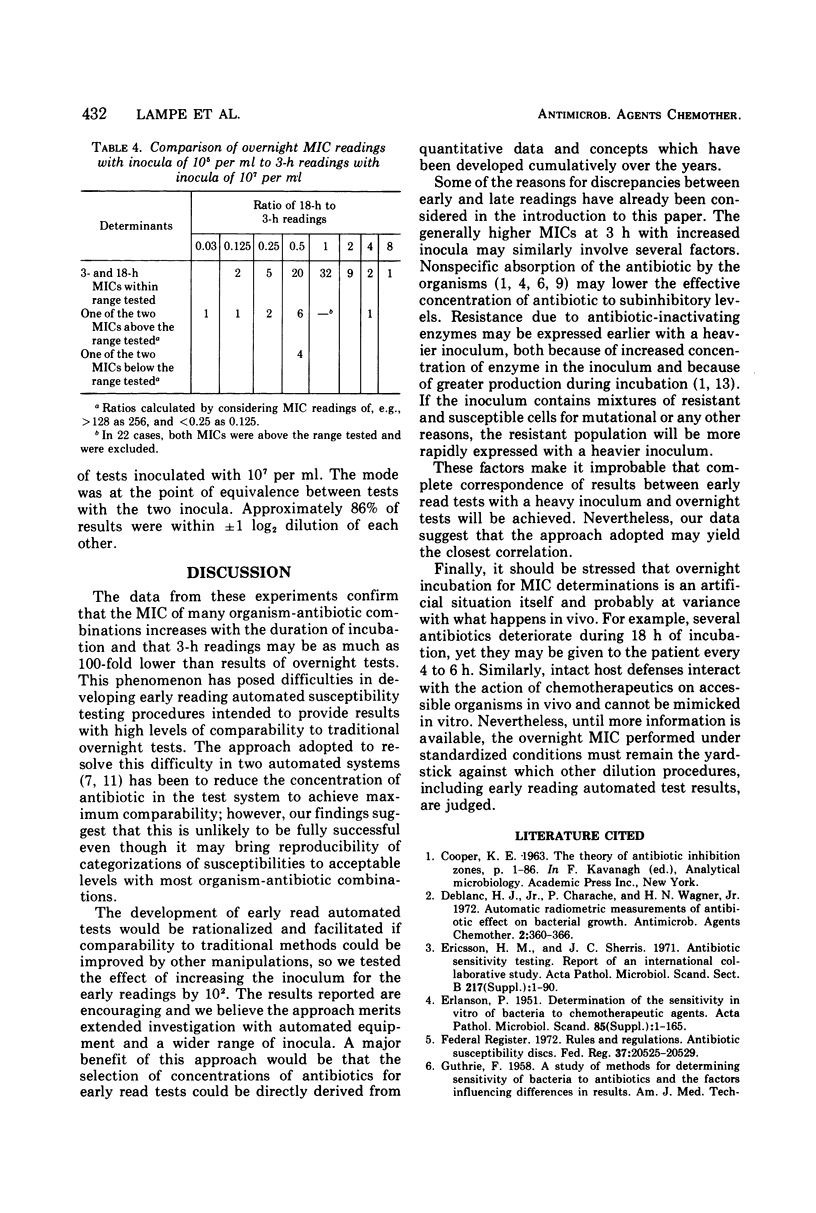
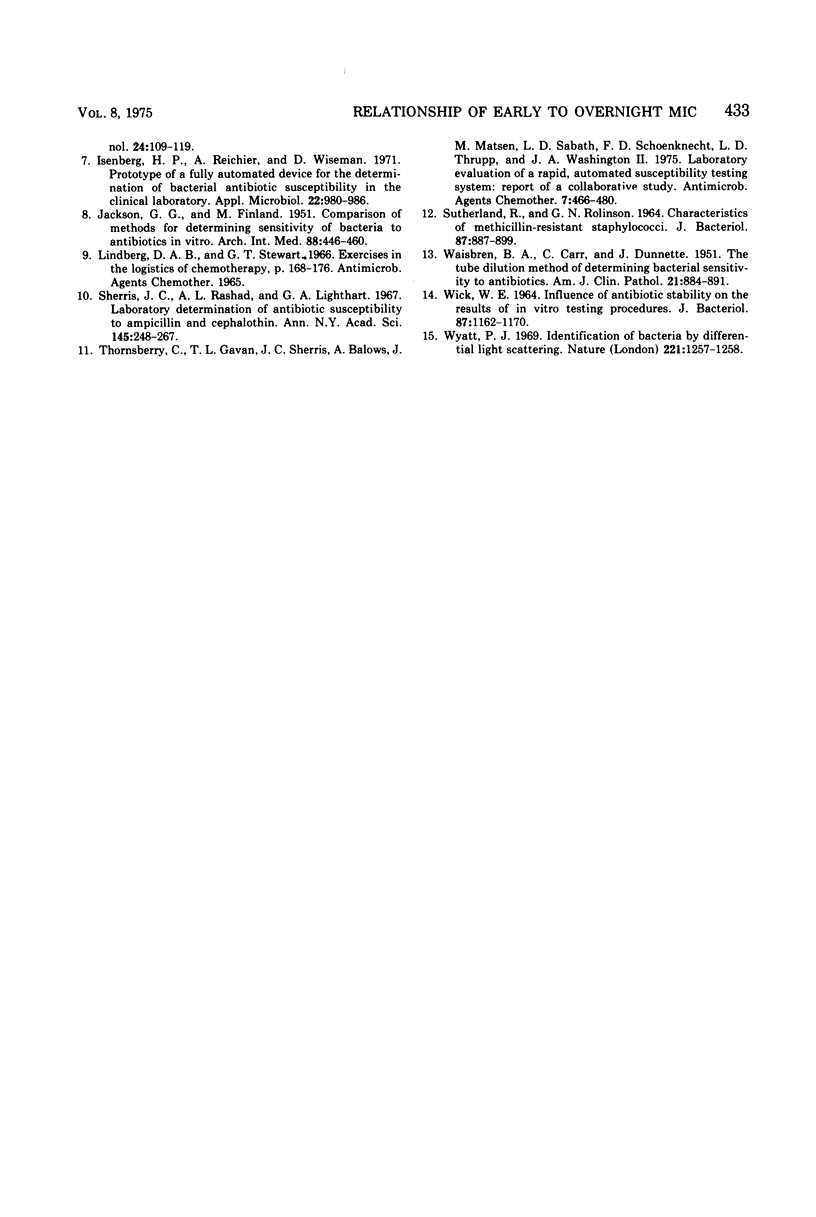
Selected References
These references are in PubMed. This may not be the complete list of references from this article.
- DeBlanc H. J., Jr, Charache P., Wagner H. N., Jr Automatic radiometric measurement of antibiotic effect on bacterial growth. Antimicrob Agents Chemother. 1972 Nov;2(5):360–366. doi: 10.1128/aac.2.5.360. [DOI] [PMC free article] [PubMed] [Google Scholar]
- ERLANSON P. Determination of the sensitivity in vitro of bacteria to chemotherapeutic agents. Acta Pathol Microbiol Scand Suppl. 1951;85:1–162. [PubMed] [Google Scholar]
- Isenberg H. D., Reichler A., Wiseman D. Prototype of a fully automated device for determination of bacterial antibiotic susceptibility in the clinical laboratory. Appl Microbiol. 1971 Dec;22(6):980–986. doi: 10.1128/am.22.6.980-986.1971. [DOI] [PMC free article] [PubMed] [Google Scholar]
- JACKSON G. G., FINLAND M. Comparison of methods for determining sensitivity of bacteria to antibiotics in vitro. AMA Arch Intern Med. 1951 Oct;88(4):446–460. doi: 10.1001/archinte.1951.03810100030003. [DOI] [PubMed] [Google Scholar]
- SUTHERLAND R., ROLINSON G. N. CHARACTERISTICS OF METHICILLIN-RESISTANT STAPHYLOCOCCI. J Bacteriol. 1964 Apr;87:887–899. doi: 10.1128/jb.87.4.887-899.1964. [DOI] [PMC free article] [PubMed] [Google Scholar]
- Sherris J. C., Rashad A. L., Lighthart G. A. Laboratory determination of antibiotic susceptibility to ampicillin and cephalothin. Ann N Y Acad Sci. 1967 Sep 27;145(2):248–267. doi: 10.1111/j.1749-6632.1967.tb50223.x. [DOI] [PubMed] [Google Scholar]
- Thornsberry C., Gavan T. L., Sherris J. C., Balows A., Matsen J. M., Sabath L. D., Schoenknecht F., Thrupp L. D., Washington J. A., 2nd Laboratory evaluation of a rapid, automatic susceptibility testing system: report of a collaborative study. Antimicrob Agents Chemother. 1975 Apr;7(4):466–480. doi: 10.1128/aac.7.4.466. [DOI] [PMC free article] [PubMed] [Google Scholar]
- WAISBREN B. A., CARR C., DUNNETTE J. The tube dilution method of determining bacterial sensitivity to antibiotics. Am J Clin Pathol. 1951 Sep;21(9):884–891. doi: 10.1093/ajcp/21.9_ts.884. [DOI] [PubMed] [Google Scholar]
- Wick W. E. Influence of antibiotic stability on the results of in vitro testing procedures. J Bacteriol. 1964 May;87(5):1162–1170. doi: 10.1128/jb.87.5.1162-1170.1964. [DOI] [PMC free article] [PubMed] [Google Scholar]
- Wyatt P. J. Identification of bacteria by differential light scattering. Nature. 1969 Mar 29;221(5187):1257–1258. doi: 10.1038/2211257a0. [DOI] [PubMed] [Google Scholar]


